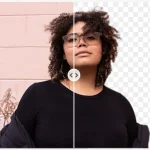Before there were smartphones and tablets engaged in a massive war for the money of American tech lovers, there was the HDTV marketplace. High definition television exploded early in the 21s century as LCD and Plasma sets did battle for the hearts and minds (and eyeballs) of American television viewers. Offering clear, crisp pictures never before experienced by the average American, HDTV adoption in the American home took off.
Now there is a new battle on the horizon for the attention of television lovers across the country, and around the world. Two competing technologies are ready to pounce on the television marketplace, LED (mainly OLEDs) and 4K TV. Like the LCDs and Plasmas that preceded them, these two technologies will have to prove to viewers which tech is better, and unlike the previous battle there may be no room for two in the marketplace.
LED/OLED
LED televisions have been around for a few years now, but these have predominantly been in the form of LED-LCD television sets that relied upon a combination of technologies. Backlighting in these sets is achieved using LED lights with rendering processes similar to LCD technology. These initial LEDs offered class-leading refresh rates of 240Hz compared to previously “acceptable” rates of 60Hz and 120Hz.
Newer OLED screens use organic light emitting diodes to produce the backlighting and each pixel in the screen contains red, blue, and green elements. This allows OLED televisions to produce the richest renditions possible because each pixel has all the elements it needs to produce any color.
OLEDs are capable of producing rich color contrasts, but also deep blacks, peak whites, and sharp detail all at the same time. On the downside however, the resolution in OLED televisions does not mark a significant improvement over the existing LCD and Plasma sets dominating the marketplace today. Additionally, to date manufacturers have touted only larger models in excess of 55 inches that cost as much as $10,000.
4K UD Television
The true talk of the town lately has been the creation of 4K UD televisions that are considered “ultra-high definition.” While the colors are rich and impressive in 4K sets, this is not their selling point. Compared to the 1080p resolution of current high-end LCD and Plasma televisions, 4K televisions boast a resolution estimated around 3840×2160. This means 8,294,400 pixels on the screen.
Current HDTV sets have around 2 million pixels on the screen and the difference, four times greater, led to the naming of this technology as 4K. This advanced resolution brings the sharpest images possible on any television set and some have equated it to being capable of bringing 3D life to regular 2D images.
Price and a lack of programming leave 4K trailing OLED technology, even if it is only for the time being. Sony and other 4K manufacturers are in talks with DISH and DirecTV about adding 4K programming to their lineups, but until they do there is no optimized 4K content available. That leads into the next disadvantage, price. Many 4K sets available at present are super-sized sets. One 84 inch model from Sony costs $25,000.
Lasting Impressions
Pricing for both sets is currently prohibitive to a wide adoption of either technology, but that was the case early on for LCD and Plasma as well. As prices come down both sets will find willing consumers, assuming sizes come down as well. It is hard to imagine many households wanting 55 inch or larger sets hanging on the wall.
OLED technology may be at a disadvantage over the long run because the technology is still untested, giving rise to concern that it could suffer from screen burn or other visual impairments similar to the struggles of early Plasma sets. 4K televisions on the other hand mark an improvement on the technology behind LCDs and Plasmas, and have predictable longevity and lifespans already.
As with LCDs and Plasmas before them though, both OLED and 4K will find supporters and detractors. A great deal of their success will depend on competitive pricing and consumers believing they are the right fit for their space at home.
Courtney Whitehead is a former TV salesperson. She now spends her days writing about entertainment and TV news. Visit this link find local TV services and learn more.









